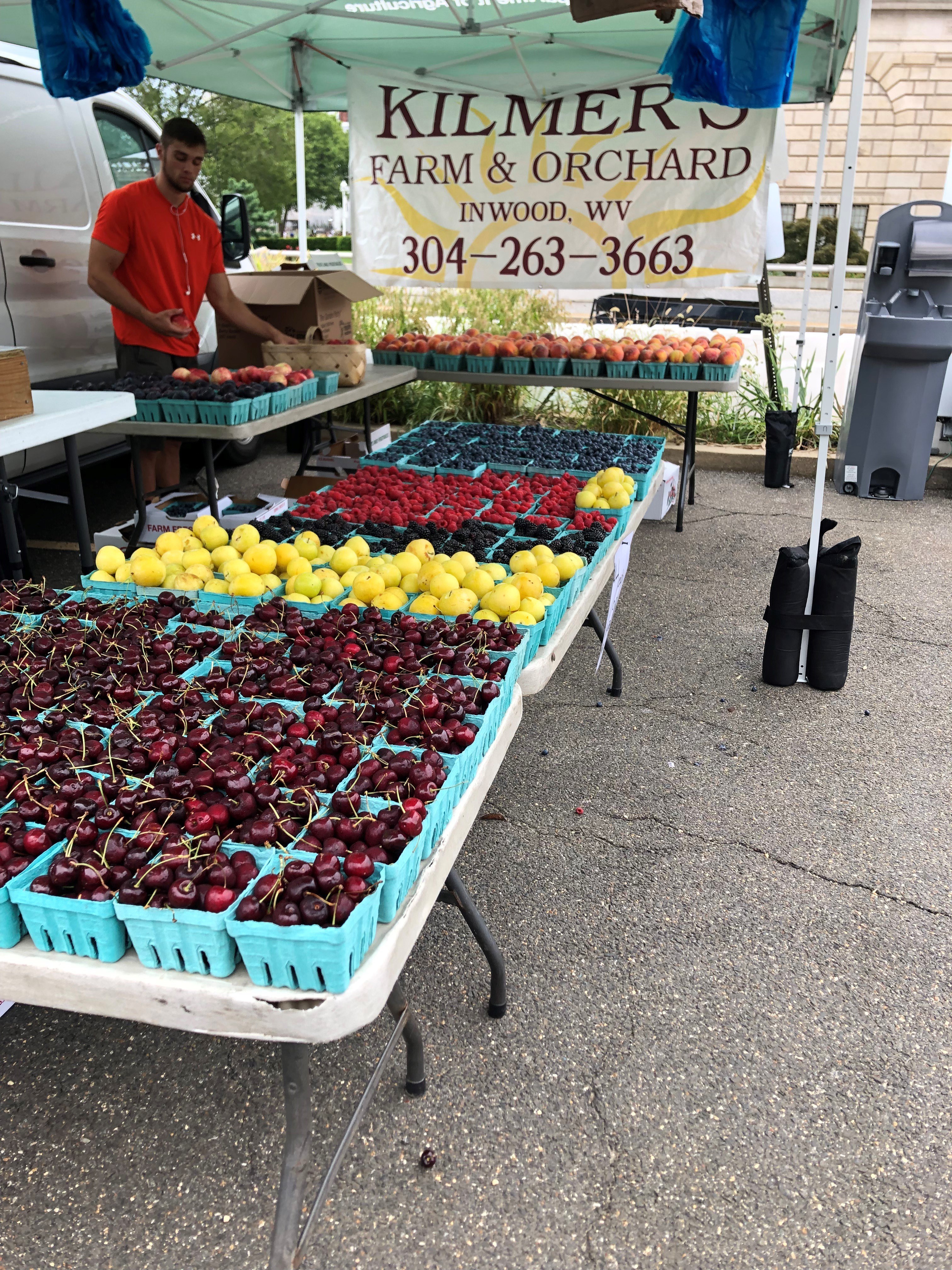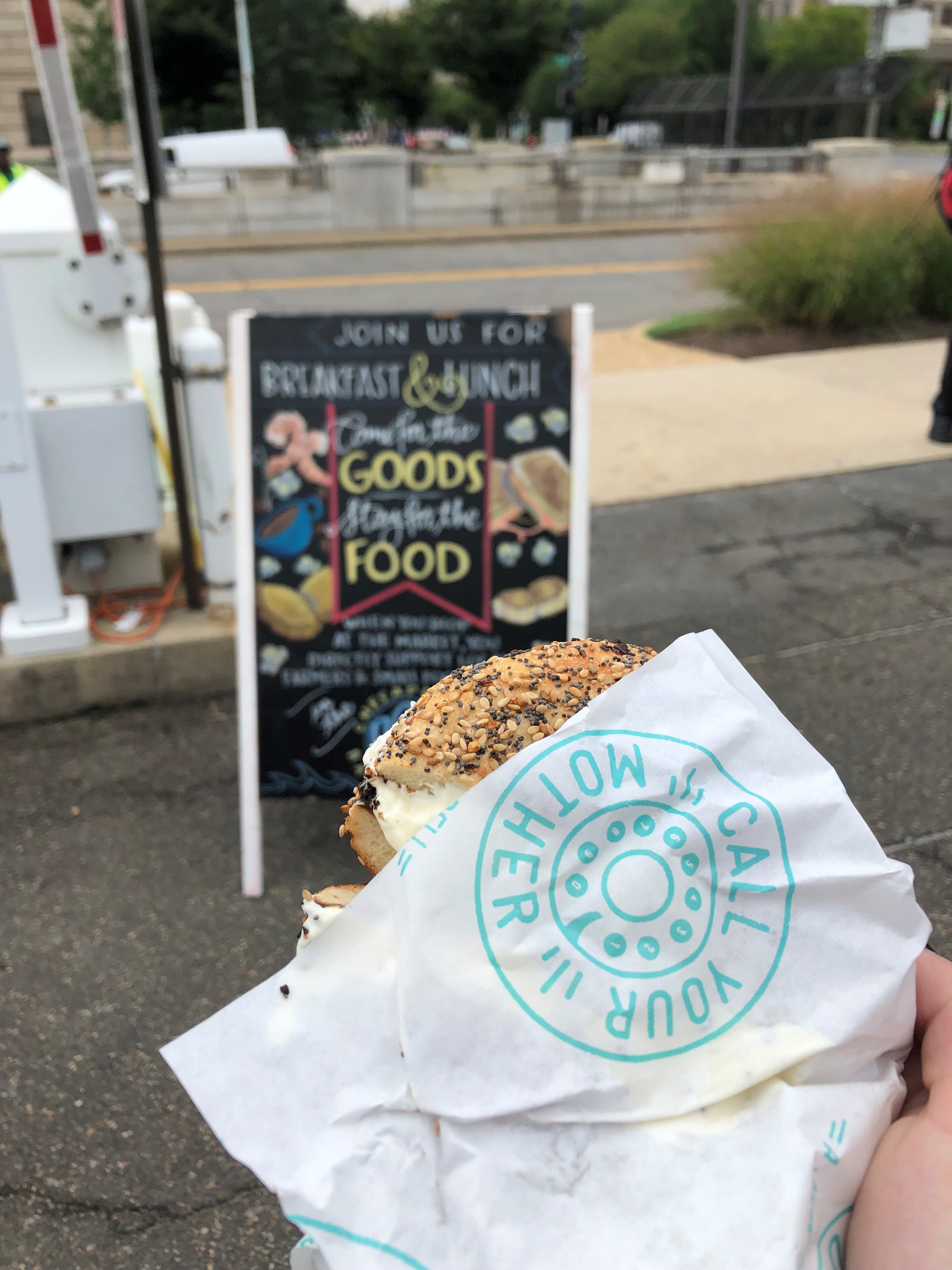Celebrating America’s Farmers’ Market, and Farmers’ Markets Everywhere
Erin Anthony
Director, Communications
Erin Anthony
Director, Communications
By Bailey Corwine
Every Friday, from 9 a.m. to 2 p.m., residents of Washington, D.C., can find something a little unexpected in the bustling metropolitan area of the National Mall: a farmers’ market. The market, which is organized and hosted by USDA, has been hosting farmers, ranchers, growers and producers from around the D.C. area since 1995.
For the 2019 market season, which runs until Oct. 25, more than 30 vendors assemble on the sidewalk around the USDA headquarters to sell local honey, fresh seafood, artisanal dog treats and much more. Hungry customers can not only browse a large selection of fresh produce, but also check out a variety of breakfast and lunch options, ranging from local bagels to grass-fed beef burgers.

According to USDA’s website, the Agricultural Marketing Service uses the USDA Farmers Market as a “living laboratory” for farmers’ markets across the country, of which there are over 8,600. This not only allows AMS to study best practices for a farmers’ market, it also gives farmers the chance to experience a market in a somewhat controlled environment.
“I like the fact that it is a USDA market,” said Dana Gillum, head of livestock operations at Hillcrest Farm in Maryland. “This is our first market, so we figured we’d try it out and see what happens.”
While the draw for many farmers’ market vendors and customers is getting the opportunity to meet a local farmer, that is not always the case at the USDA Farmers’ Market.
“You meet people from all over,” said Bill Schutte, a Virginia farmer who sells grass-fed beef, among other products, at the market every Friday. “You could talk to someone from Texas, and then you could sit down with someone from England, or Barcelona, Spain.”

However, the educational opportunities often found at a traditional, local farmers’ market are still present at the USDA market. Customers get to meet real farmers, growers, fishers and ranchers and ask them questions about how their food is grown.
“We’ll talk to someone from a developing country about how we use rotational grazing on our farm, and they will say it’s a process that could work in their home country,” Schutte said.

Whether your closest farmers’ market is just down the street, or two hours away, the experience of attending a farmers’ market is one worth having, especially during National Farmers Market Week, Aug. 4-10. USDA started this celebration in 1999 to highlight the important role farmers’ markets play in the nation’s food system, as about 8% of U.S. farms market foods locally, through direct-to-consumer or intermediated sales.
To learn more about farmers’ markets, or to find a farmers’ market near you, visit https://www.ams.usda.gov/services/local-regional/food-directories.
Bailey Corwine is an intern in the American Farm Bureau Federation’s Communications Department. She will graduate from the University of Arkansas in December with a degree in agricultural communications.
Trending Topics
VIEW ALL